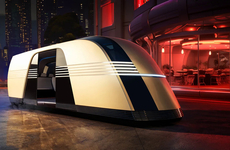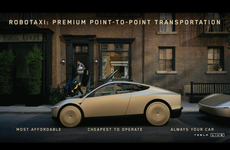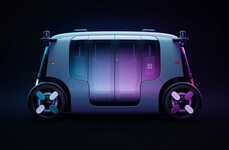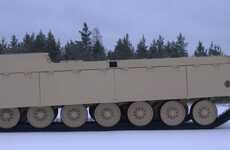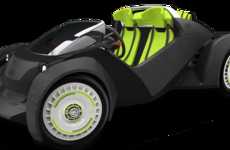
The Servvan Robotic Vehicle Does All the Driving for You
Michael Baxter — May 2, 2014 — Autos
References: adesignaward & tuvie
We're getting desperately close to having robotic vehicles for every single household and the Servvan Robotic Vehicle may be the first model to make a mainstream debut.
The big thing about this particular vehicle that is breaking the mold is that you don't actually have to drive it. Currently they're getting close to figuring out a way to have autonomous cars, but so far it's simply parking assistance and collision avoidance. This car is different in that it uses magnets and on-board computers to determine trajectory.
The cars are also designed in a futuristic way to compliment its advanced attributes. While it's currently just a concept, the cars are expected to work as autonomous cabs and self-steering home vehicles.
The big thing about this particular vehicle that is breaking the mold is that you don't actually have to drive it. Currently they're getting close to figuring out a way to have autonomous cars, but so far it's simply parking assistance and collision avoidance. This car is different in that it uses magnets and on-board computers to determine trajectory.
The cars are also designed in a futuristic way to compliment its advanced attributes. While it's currently just a concept, the cars are expected to work as autonomous cabs and self-steering home vehicles.
Trend Themes
1. Autonomous Vehicles - The development of autonomous vehicles is disrupting the transportation industry by eliminating the need for human drivers.
2. Robotic Technology - Advancements in robotic technology are creating disruptive innovation opportunities in various industries, including transportation and manufacturing.
3. Smart Mobility Solutions - The rise of smart mobility solutions is revolutionizing transportation by introducing autonomous cars and transforming how people commute.
Industry Implications
1. Transportation - The transportation industry has the potential to embrace disruptive innovation with the adoption of autonomous vehicles and robotic technology.
2. Manufacturing - The manufacturing industry can leverage robotic technology to automate processes and increase efficiency, leading to disruptive innovations in production and assembly.
3. Technology - The technology industry plays a crucial role in developing and refining autonomous vehicle systems and advancements in robotic technology, presenting disruptive innovation opportunities.
3.1
Score
Popularity
Activity
Freshness

